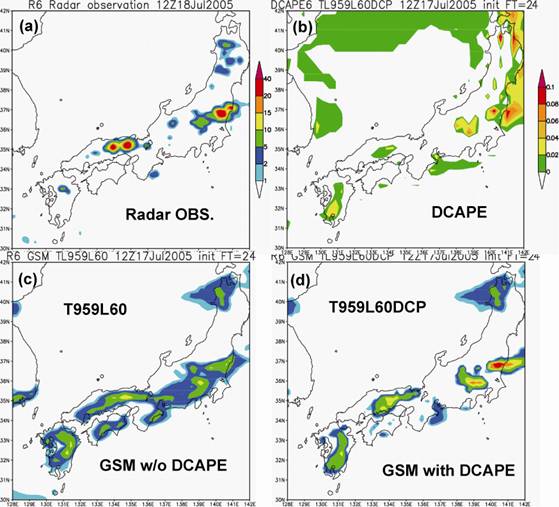Precipitation Forecast Improved with a New Convective Triggering Mechanism
Submitter:
Xie, Shaocheng — Lawrence Livermore National Laboratory
Zhang, Minghua — Stony Brook University
Area of research:
General Circulation and Single Column Models/Parameterizations
Journal Reference:
Xie, S, and M Zhang. 2000. "Impact of the convective triggering function on single-column model simulations." Journal of Geophysical Research 105: 14983-14996.Science
An improved convective triggering mechanism developed by ARM scientists ba
Impact
With the new triggering mechanism, the revised JMA’s GSM (T959L60DCP) substantially reduced the precipitation bias in the original T959L60 global model, which tends to overestimate weak precipitation area especially from local noon to late afternoon over Japan (See Figure 1). The predicted geographic distribution of precipitation and the intensity of strong precipitation events by T959L60DCP are much closer to observations than the original model.
Summary
Since November 2007, the new convective triggering mechanism has been used in the JMA’s global model for operational weather forecasts.


